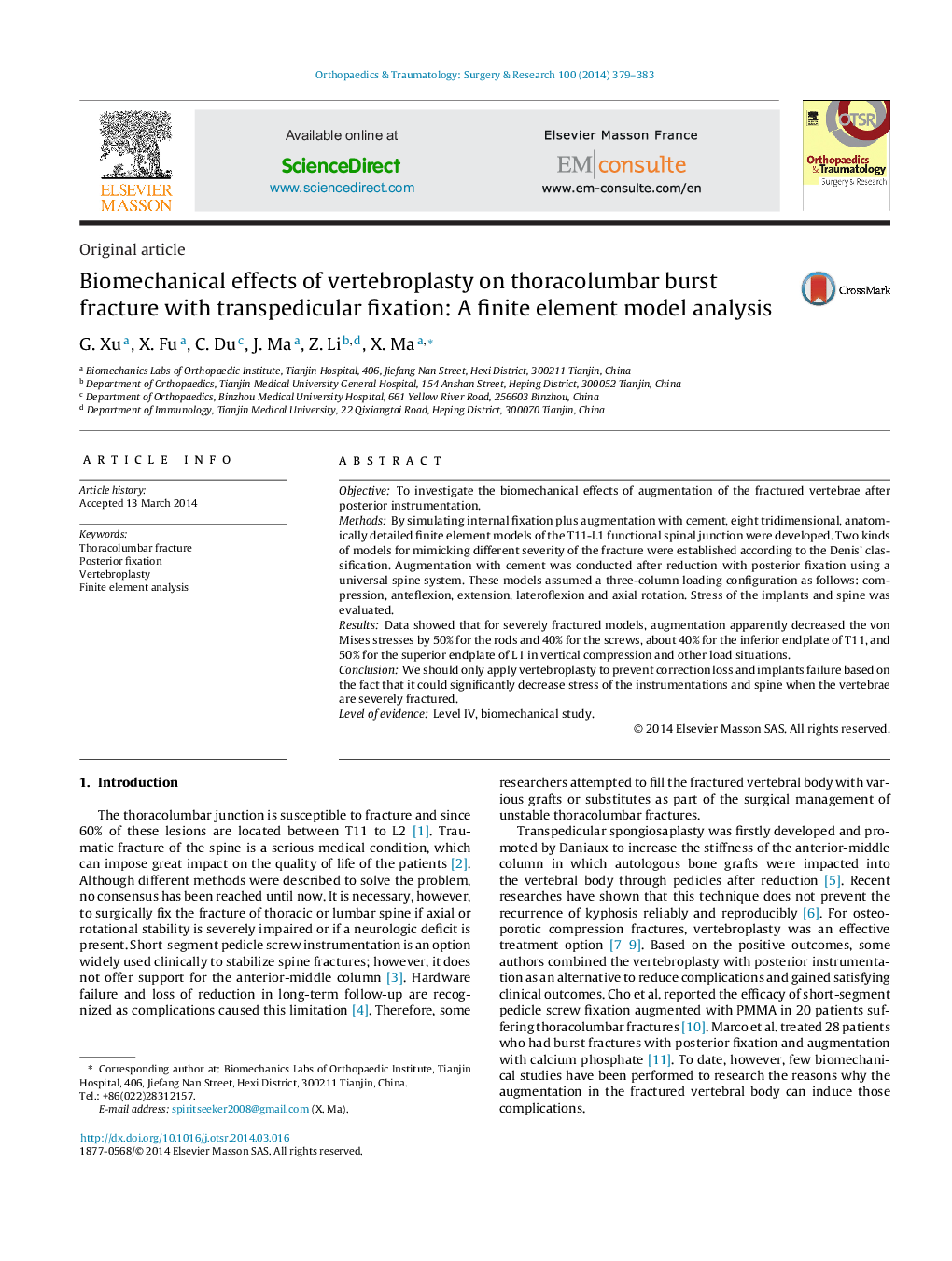| Article ID | Journal | Published Year | Pages | File Type |
|---|---|---|---|---|
| 4081434 | Orthopaedics & Traumatology: Surgery & Research | 2014 | 5 Pages |
ObjectiveTo investigate the biomechanical effects of augmentation of the fractured vertebrae after posterior instrumentation.MethodsBy simulating internal fixation plus augmentation with cement, eight tridimensional, anatomically detailed finite element models of the T11-L1 functional spinal junction were developed. Two kinds of models for mimicking different severity of the fracture were established according to the Denis’ classification. Augmentation with cement was conducted after reduction with posterior fixation using a universal spine system. These models assumed a three-column loading configuration as follows: compression, anteflexion, extension, lateroflexion and axial rotation. Stress of the implants and spine was evaluated.ResultsData showed that for severely fractured models, augmentation apparently decreased the von Mises stresses by 50% for the rods and 40% for the screws, about 40% for the inferior endplate of T11, and 50% for the superior endplate of L1 in vertical compression and other load situations.ConclusionWe should only apply vertebroplasty to prevent correction loss and implants failure based on the fact that it could significantly decrease stress of the instrumentations and spine when the vertebrae are severely fractured.Level of evidenceLevel IV, biomechanical study.
